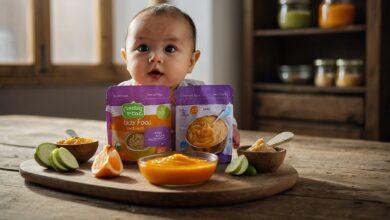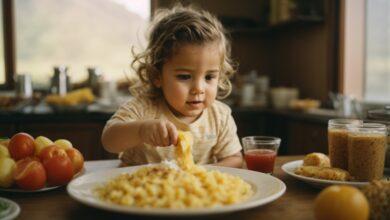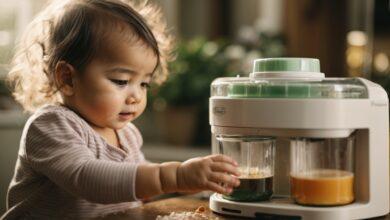The Ultimate Guide to Baby Formula Mixers: Everything You Need to Know
Blend with Ease: Baby Formula Mixer for Effortless Infant Nutrition
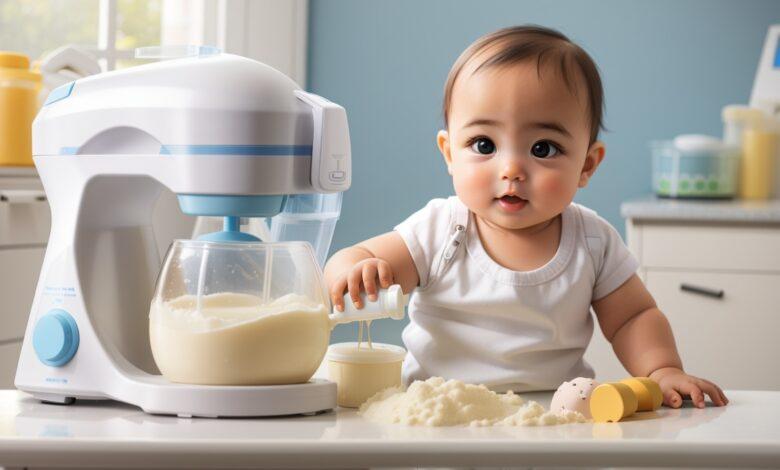
Introduction to Baby Formula Mixers
What is a Baby Formula Mixer?
A baby formula mixer is a specialized device designed to simplify the process of preparing baby formula. It is a convenient tool that ensures the formula is properly mixed, eliminating clumps and creating a smooth blend. The mixer works by agitating the powdered formula and liquid, effectively combining them to create a consistent and nourishing meal for your baby.
Using a baby formula mixer offers several benefits compared to manual mixing. Firstly, it saves time and effort, as the mixer efficiently blends the formula, reducing the need for manual stirring. Additionally, by thoroughly mixing the formula, it helps to prevent clumps, ensuring an even distribution of nutrients. This is especially important as clumps can lead to an inconsistent feeding experience for the baby.
There are different types of baby formula mixers available on the market. Manual mixers require you to manually rotate a handle or press a button to mix the formula. Electric mixers, on the other hand, operate with the push of a button or switch, automating the mixing process. Lastly, automated mixers are the most advanced option. These mixers are equipped with pre-set mixing programs and can even dispense the prepared formula into bottles automatically.
The Science Behind Baby Formula Mixers
How Baby Formula Mixers Work
Baby formula mixers work on the principle of agitation. They use various mechanisms, such as rotating blades, stirring paddles, or high-frequency vibrations, to mix the powdered formula and liquid effectively. The agitation breaks down clumps and evenly distributes the components, resulting in a smooth and consistent mixture.
When selecting a baby formula mixer, it’s essential to consider specific key features. Look for mixers that have adjustable mixing speeds, as this allows you to control the intensity of mixing according to your baby’s needs. The ability to mix different volumes of formula is also vital, as it ensures you can prepare the desired quantity. Additionally, opt for mixers with easily accessible and detachable parts for convenient cleaning and maintenance.
It is crucial to follow the safety precautions provided by the manufacturer when using a baby formula mixer. To avoid mishaps, keep the mixer out of reach of children and ensure that it is placed on a stable surface while in operation. Never submerge the electrical components of the mixer in water and always unplug it before cleaning.
Choosing the Right Baby Formula Mixer
Evaluating Your Needs and Budget
Before selecting a baby formula mixer, evaluate your specific requirements. Assess factors such as the frequency of formula preparation, your budgetary constraints, and the level of convenience you desire. Consider whether you need a simple manual mixer or a more advanced automated option.
When it comes to budget, keep in mind that more advanced features and automation often come at a higher cost. However, investing in a quality mixer can be cost-effective in the long run, considering the time and effort it saves in the formula preparation process.
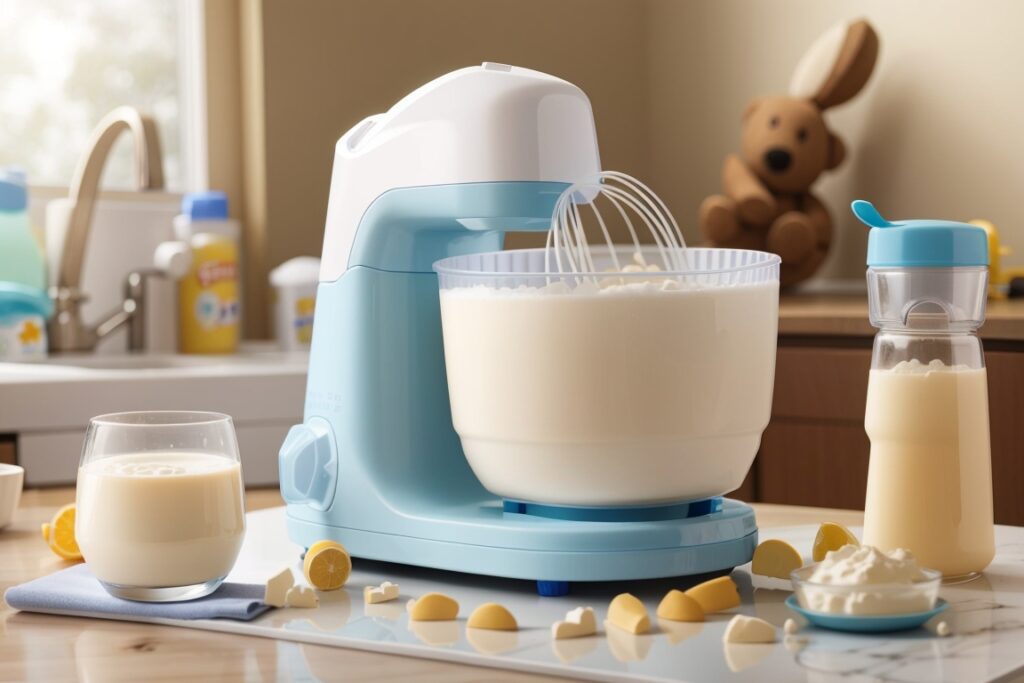
Types of Baby Formula Mixers
There are three main types of baby formula mixers: manual mixers, electric mixers, and automated mixers. Each category possesses its own set of advantages and disadvantages.
Manual mixers are the most affordable option and require you to manually rotate a handle or press a button to mix the formula. They are often compact and travel-friendly but might require more effort on your part for effective mixing.
Electric mixers simplify the mixing process by automating it with the push of a button or switch. They are typically more expensive than manual mixers but offer convenience and ease of use. Electric mixers are suitable for those who prioritize efficiency and simplicity in formula preparation.
Automated mixers are the most advanced option available. They come equipped with pre-set mixing programs and even dispense the prepared formula into bottles automatically. Automated mixers offer maximum convenience but are often the most expensive option. They are ideal for busy parents who want a fully automated and hands-free formula preparation experience.
Reviews of Popular Baby Formula Mixers
When selecting a baby formula mixer, it’s helpful to analyze customer feedback and ratings to understand the performance and reliability of different brands and models. Look for mixers with positive reviews highlighting their effectiveness in eliminating clumps, ease of use, and durability. Consider the top-rated mixers that align with your specific needs and budget.
How to Use and Maintain a Baby Formula Mixer
Step-by-Step Guide for Proper Usage
To use a baby formula mixer effectively, follow these step-by-step instructions:
- Start by preparing the baby formula according to the instructions provided by the formula manufacturer.
- Assemble the baby formula mixer according to the manufacturer’s guidelines. Ensure all parts are securely attached.
- Place the powdered formula and liquid into the mixer’s designated compartments. Refer to the mixer’s user manual for specific measurements and instructions.
- Activate the mixer as per the operating instructions. This may involve pressing a button, rotating a handle, or selecting a pre-set program on an automated mixer.
- Allow the mixer to run for the recommended duration or until the formula is thoroughly mixed.
- Once the formula is mixed, pour it into a clean and sterilized bottle, ready for feeding.
Cleaning and Maintaining Your Baby Formula Mixer
Regular cleaning and maintenance of your baby formula mixer are essential to ensure its longevity and hygiene. Follow these guidelines for different types of mixers:
- Manual Mixers: Disassemble the mixer and wash each part with warm, soapy water. Rinse thoroughly to remove any soap residue. Allow the parts to air dry completely before reassembling.
- Electric Mixers: Unplug the mixer and wipe the exterior with a damp cloth. For detachable parts, clean them as you would with the manual mixer. Be cautious of electrical components and avoid immersing them in water.
- Automated Mixers: Refer to the manufacturer’s instructions for cleaning an automated mixer. Some models may have dishwasher-safe parts, while others may require wiping with a damp cloth.
Remember to consult the user manual provided by the manufacturer for specific cleaning and maintenance instructions.
Safety Guidelines for Using Baby Formula Mixers
Ensuring Hygiene and Sanitation
Maintaining hygiene and sanitation is crucial when using a baby formula mixer. Follow these guidelines:
- Proper Handwashing Techniques: Thoroughly wash your hands with soap and water before handling the formula, the mixer, or any accessories.
- Sanitizing the Mixer: Regularly sanitize the mixer and its accessories, following the manufacturer’s instructions to prevent the growth of bacteria or other contaminants.
- Safe Storage of Prepared Formula: Store prepared formula in clean and air-tight containers, following the recommended storage guidelines provided by the formula manufacturer.
Avoiding Potential Hazards
To ensure your baby’s safety, be mindful of potential risks and dangers associated with baby formula preparation:
- Understand Potential Risks and Dangers: Educate yourself about the potential risks, such as bacterial contamination, incorrect formula ratios, or overheating bottles. Follow guidelines provided by healthcare professionals and the formula manufacturer to mitigate these risks.
- Baby Formula Preparation Do’s and Don’ts: Familiarize yourself with the do’s and don’ts of baby formula preparation, such as using freshly boiled water, following the recommended formula-to-water ratio, and discarding unused formula within a specified time frame.
- Childproofing Your Baby Formula Mixer Area: Keep the mixing area clear of any potentially hazardous objects or substances. Ensure the mixer is placed on a stable surface and out of reach of children to prevent accidents.
Benefits and Drawbacks of Baby Formula Mixers
Advantages of Using a Baby Formula Mixer
Using a baby formula mixer offers several advantages:
- Better Formula Consistency and Elimination of Clumps: A baby formula mixer ensures that the powdered formula is thoroughly mixed with liquid, resulting in a smooth and clump-free mixture. This consistency ensures the baby receives a uniform blend of essential nutrients with each feeding.
- Saving Time and Effort in Preparation: Baby formula mixers automate the blending process, saving parents valuable time and effort. They eliminate the need for manual stirring, allowing parents to focus on nurturing their little ones.
- Convenience for Parents On-the-Go: Portable baby formula mixers enable parents to prepare formula anywhere, making it convenient for outings, trips, or visits to family and friends.
Limitations of Baby Formula Mixers
While baby formula mixers offer numerous benefits, there are some limitations to consider:
- Cost Considerations: Advanced baby formula mixers with automation and additional features can be more expensive than manual mixers. Be sure to budget accordingly and consider the long-term benefits.
- Learning Curve for New Users: Some baby formula mixers may require time to familiarize yourself with their features and functionalities. The learning curve varies depending on the complexity of the mixer. However, with the user manual and practice, you can quickly master the operation.
- Potential Reliance on Technology: Those who prefer a more traditional or hands-on approach to formula preparation may feel less inclined to rely on technology and automation. It’s important to find a balance that aligns with your preferences and comfort level.
Summary and FAQs
Recap of Key Points
In summary, a baby formula mixer is a valuable tool that simplifies the preparation process, ensuring consistent and clump-free formula for your little one. Key points to remember include the benefits of using a baby formula mixer, factors to consider when selecting a mixer, and proper usage, cleaning, and safety guidelines.
Frequently Asked Questions (FAQs)
- Can baby formula mixers be used for all types of formula?
- Yes, baby formula mixers can be used with most types of formula, including powdered formulas and those used for specific dietary needs. Always refer to the formula manufacturer’s instructions to ensure compatibility.
- Are there any age restrictions for using baby formula mixers?
- Baby formula mixers can generally be used for infants of all ages, from newborns to toddlers. Follow the specific guidelines provided by the mixer’s manufacturer to ensure safe usage for your baby’s age group.
- How long does it take to mix the formula using a baby formula mixer?
- The mixing time can vary depending on the model and type of baby formula mixer. As a general guideline, most mixers require a few minutes to ensure proper mixing. Refer to the manufacturer’s recommendations for the specific mixer you choose.
Remember, selecting a baby formula mixer that caters to your specific needs and budget will provide you with a convenient and efficient solution for preparing nourishing formula for your baby.



